What to Know About Epoxy Floor: Ultimate Design Guide

When considering a home renovation, the first thing to do is think about the basics: how will the walls and floors look? Focusing specifically on the floor, you have a limitless number of options for now. If you want to step outside of the box and want a cleaner, highly customizable option, you should consider adding epoxy floors to your home. However, any new idea can be confusing at first. That’s why we’ve taken the time to help you and break down this ultimate guide. Keep reading, and we’ll look at everything from what epoxy flooring is to the number of ways you can incorporate it into your home design.
What Is Epoxy?
Epoxy flooring is gaining popularity, but that begs the question: What exactly is epoxy flooring? Epoxy flooring, also known as resinous flooring, is a coating made up of a two-part epoxy system. It uses a combination of epoxy resin and hardeners that, when mixed, create a chemical reaction and bond together. This process creates multiple layers of epoxy that attach to the subfloor, creating a durable flooring material with multiple layers.
It starts with a layer of concrete flooring. After the concrete flooring is laid out and smoothed over, it’s prepped for the next steps that make it epoxy flooring. At the same time or directly after, a mixture of resin and a hardening chemical is prepared to go on the floor. Over a few days, this mixture will harden into a type of plastic. The mixture is poured onto the concrete and given time to harden. Afterward, additional layers may be added. Epoxy flooring is often used in commercial and industrial buildings like schools and hospitals, but it also serves a purpose in residential environments.
Types of Epoxy Flooring
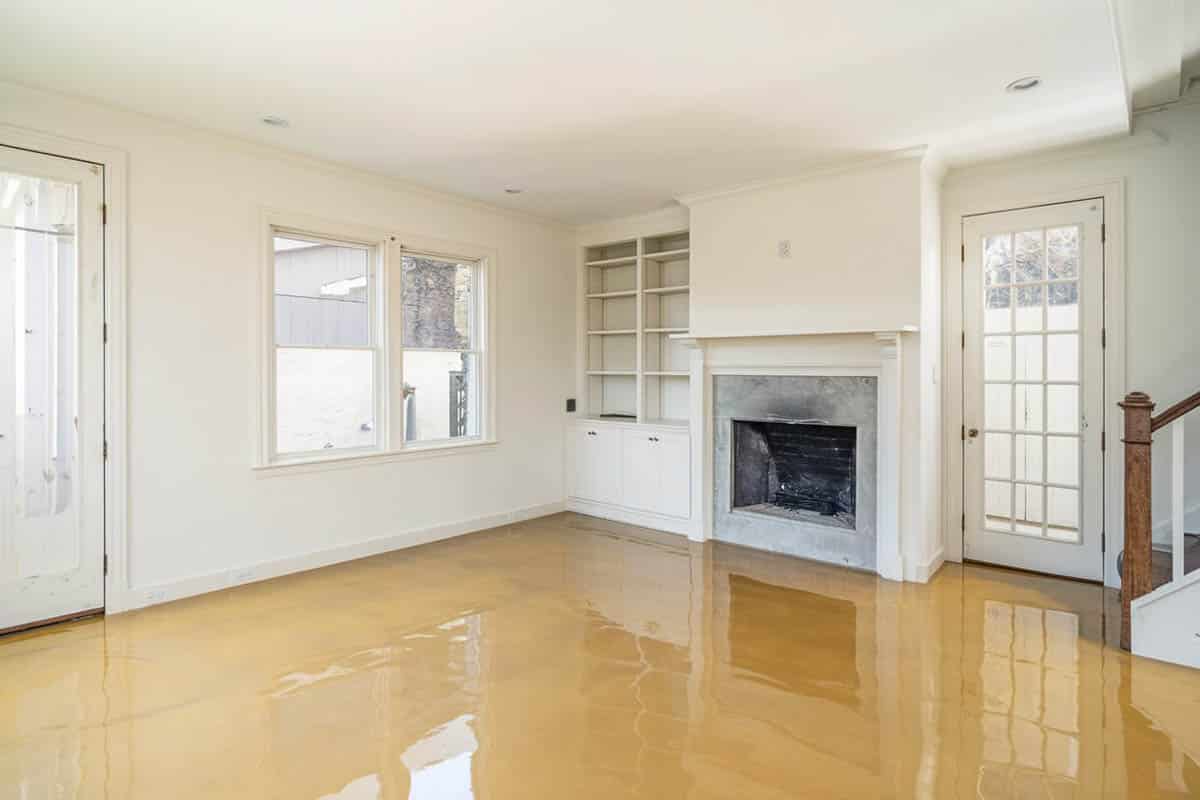
Epoxy flooring doesn’t refer to a single option but represents an overarching category. It’s important to understand your options when looking for epoxy flooring for a garage, basement, or other room in your home to cater to your needs and interior design preferences. Here are some of the options you have at your disposal.
Epoxy Coatings
Epoxy floor coating is epoxy flooring in its most basic form. It refers to the methods and supplies used to create epoxy flooring over existing flooring. This material is usually concrete, but you have a few different options. The material is a popular choice when you need a floor that will stand up to tough environments. This is because it’s resistant to a number of harmful elements like abrasion, chemicals, and even just stains. That being said, if you want to ensure your epoxy flooring is properly installed. Otherwise, you risk lasting damage or a shortened lifespan. We’ll take a look at professional installation and DIY options in a bit.
Epoxy Resin Floor
Epoxy and epoxy resin are different in their nature. Epoxy resin is used for coating, making it a great tool when you need to add a layer to a floor, such as adding epoxy over a concrete floor base. Epoxy resin takes about 72 hours to cure, so you’ll still need to set plenty of time aside for the renovation.
Metallic Epoxy
Metallic epoxy floors are a unique choice for epoxy flooring because they aren’t a single solid color, as many epoxy floor options are. Like most epoxy, this type of epoxy is made up of two components but has the addition of a metallic pigment. Once this epoxy flooring is fully set, you’ll have a finish with a shine. In fact, it’s close to the appearance of glass but with a high durability and nearly unmatched longevity. Even better, because of the nature of epoxy, any added pigmentation that isn’t single-toned will look completely new and interesting compared to another epoxy floor.
Marble Epoxy
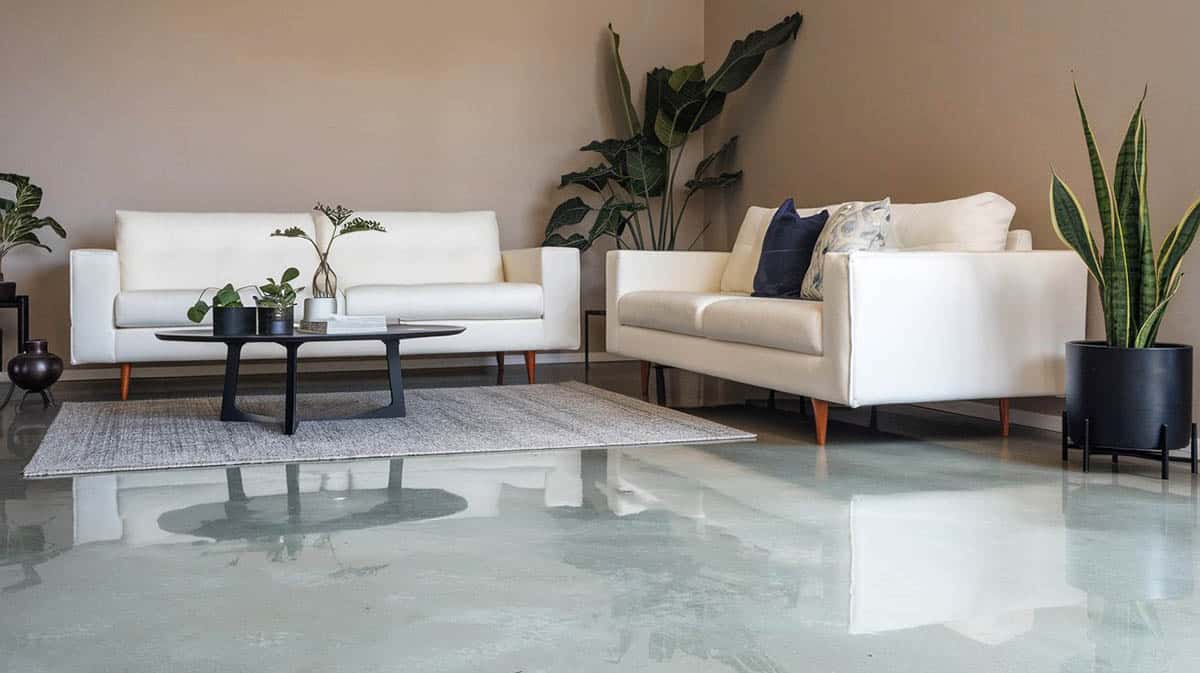
Marbled interior design has been a beautiful choice and recognized as a luxury item for centuries. That’s why renovations such as adding marble countertops in a bathroom or kitchen are so popular. You can even add marble flooring for heightened luxury in your home. Luckily, you can add this without the disadvantages of marble, like its expense, by using marble epoxy flooring. These types of epoxy floors use a blend of colors and shades to create a marbled appearance, and, as with metallic epoxy floors, you can expect something new with every marble epoxy floor you see.
Epoxy Paint
Despite their similar names, epoxy paint and epoxy coatings aren’t the same. Understanding the differences between the two is important to ensure that you get exactly the floor you’re hoping for. In composition, epoxy paint is actually paint. Specifically, it’s usually made of latex acrylic paint with epoxy. This is a smaller concentration of epoxy than an epoxy coating, but it makes it easy to use since they only need to be dried rather than mixed and cured. You can apply epoxy floor painting quicker and with less prep work than an epoxy floor coating. Yet, the downside to this is that since there is a thinner coat in epoxy paint and a lower ratio of epoxy, it won’t have the same level of durability as an epoxy floor coating.
Epoxy Colors
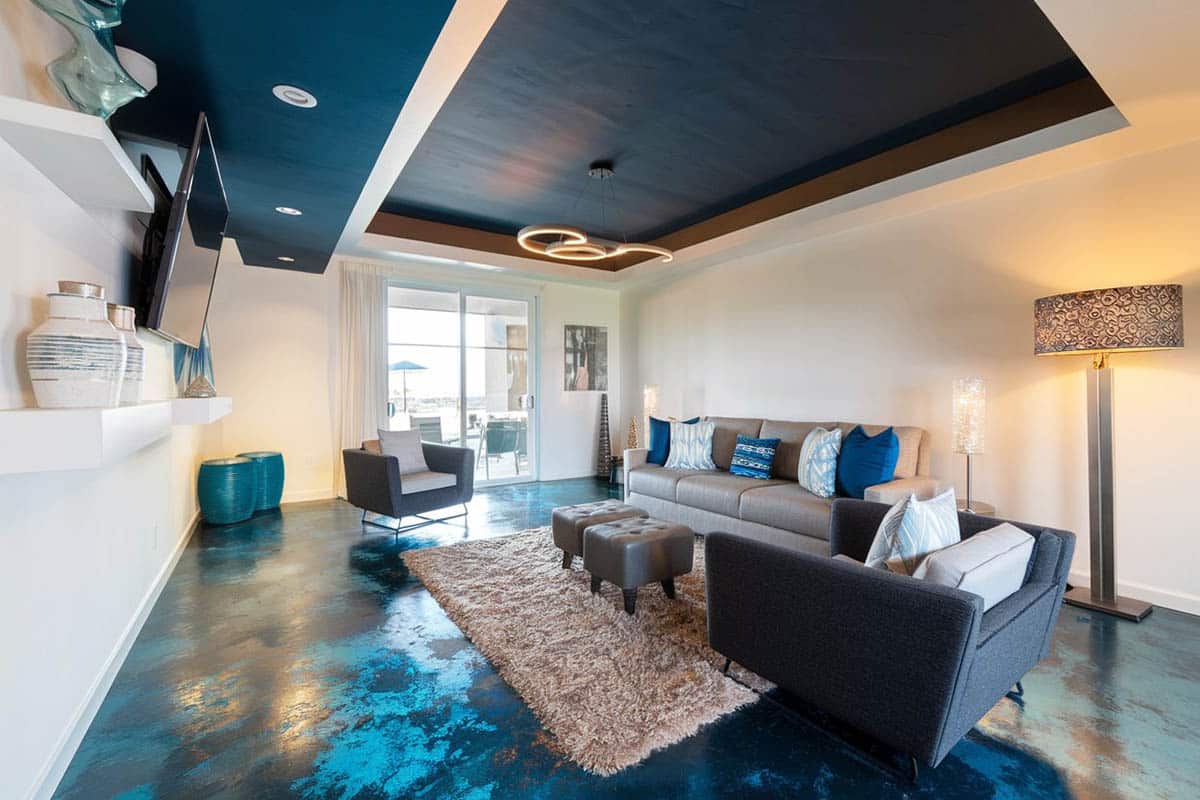
One of the biggest benefits of using epoxy flooring in your home is that it can look almost any way you want. Unlike hardwood flooring, you can opt for a wide range of colors rather than relying on a variety of shades. The standard colors for epoxy are rather neutral like white, black, gray, tan, and brown. In addition to that, some standard colors step outside of neutral territory. It’s a great choice to explore bolder colors like red, blue, green, and more. What you can do with epoxy flooring isn’t very limited, so feel free to explore a bit to find what fits your tastes.
Glitter Epoxy
If you want to have a little more fun with your floor, epoxy also has options here. One of the most fun options is to lay out a glitter epoxy floor. The primary rule here is that you’ll want to make sure you thoroughly mix the glitter into the epoxy formula for an even spread of the glitter as the floor sets.
Where to Use Epoxy Flooring
Epoxy flooring is usually considered in high-traffic work areas like garages and workshops. That being said, these are far from your only options. You can use epoxy flooring in several areas in your home such as basements, but it’s crucial to consider the advantages and disadvantages to it.
Garage Floor Epoxy
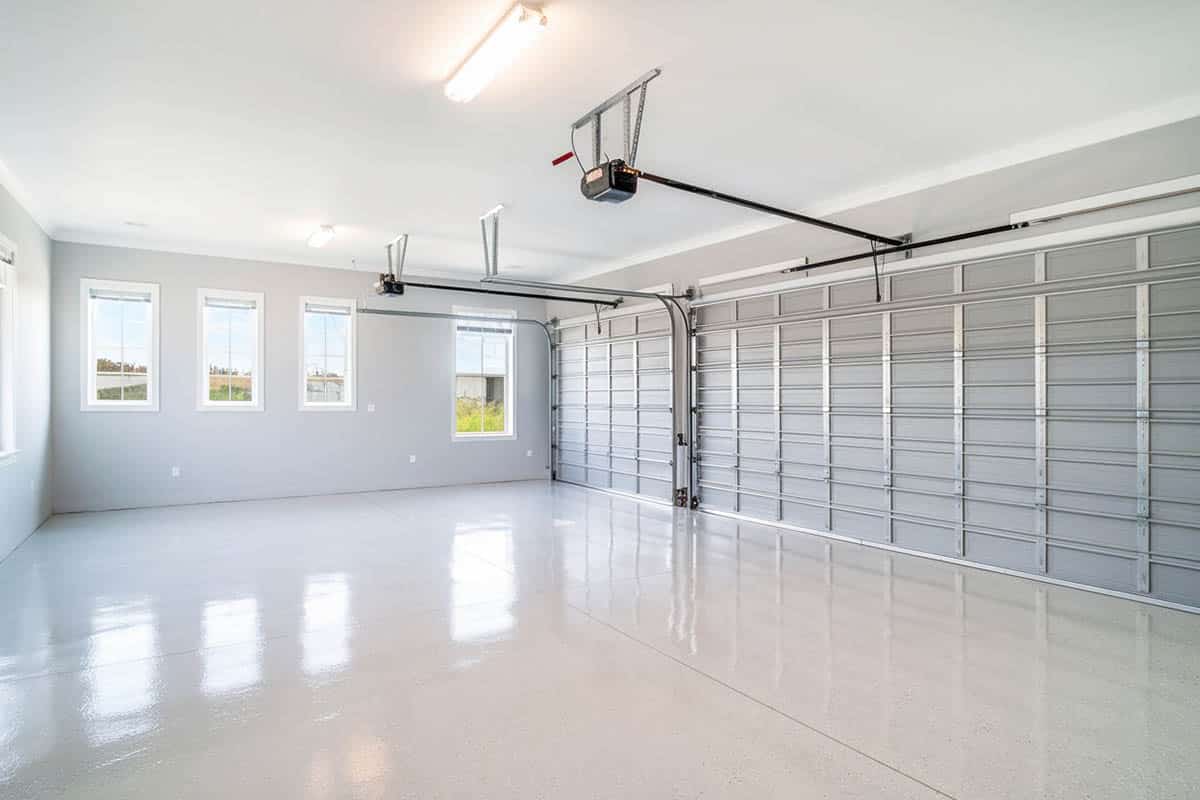
Epoxy floors are often seen in garages for many reasons, but the primary ones revolve around their durability. Generally, a well-installed epoxy floor will last a long time, but it’s also fairly resistant to lasting damage. This means that epoxy floors are a great choice for an area that sees a lot of work. They’re even suited to more industrial settings like an auto shop or factory, so an epoxy floor can handle anything you throw at it. However, heavy vehicle traffic will degrade it faster than standard foot traffic.
Epoxy Basement Floor
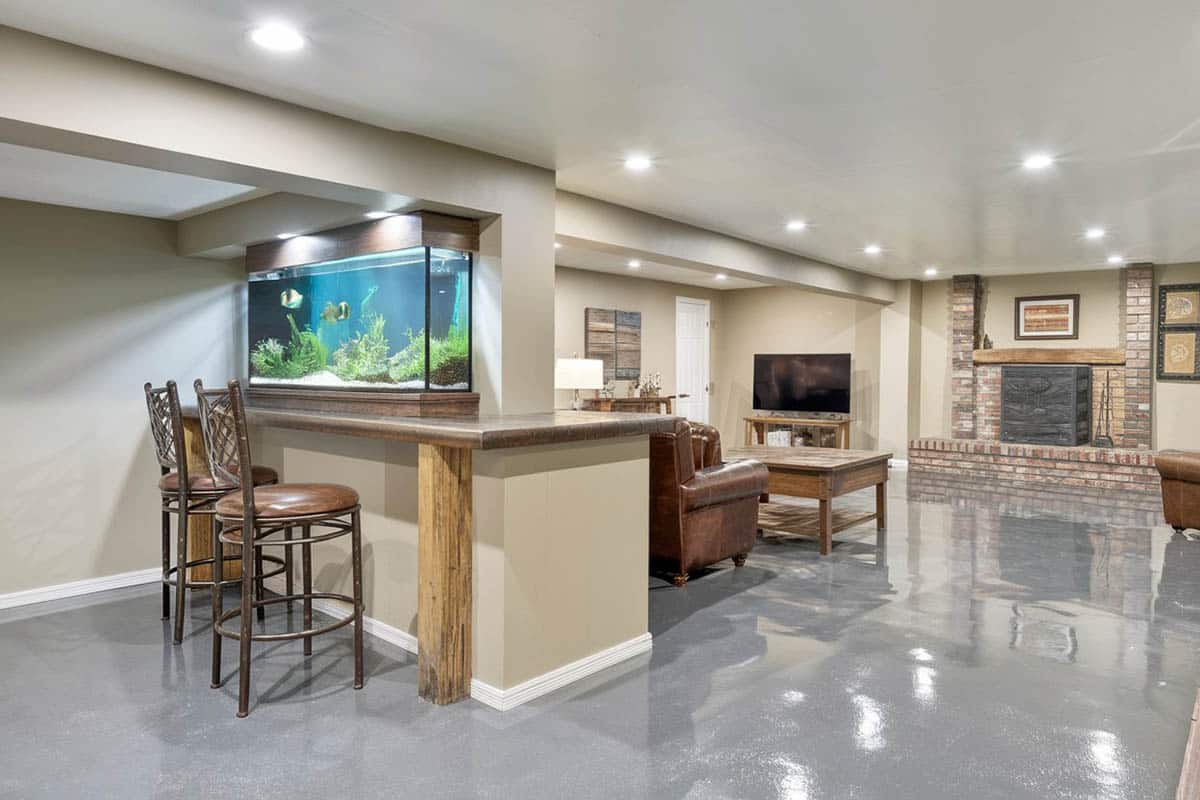
Epoxy floors are great in basements for a lot of the same reasons that they’re great for garage floors. You don’t have to worry about them getting damaged easily and you can even customize them if you have a furnished basement that you spend a lot of time in to make the space more personalized.
However, if you have chronic moisture-related problems in your basement, epoxy flooring might not be the best solution. The concrete base flooring must be completely dry to lay out the epoxy and achieve a lasting and beautiful result. Otherwise, the epoxy is prone to lifting away from the concrete rather than creating a flat, smooth surface.
Epoxy Kitchen Floor
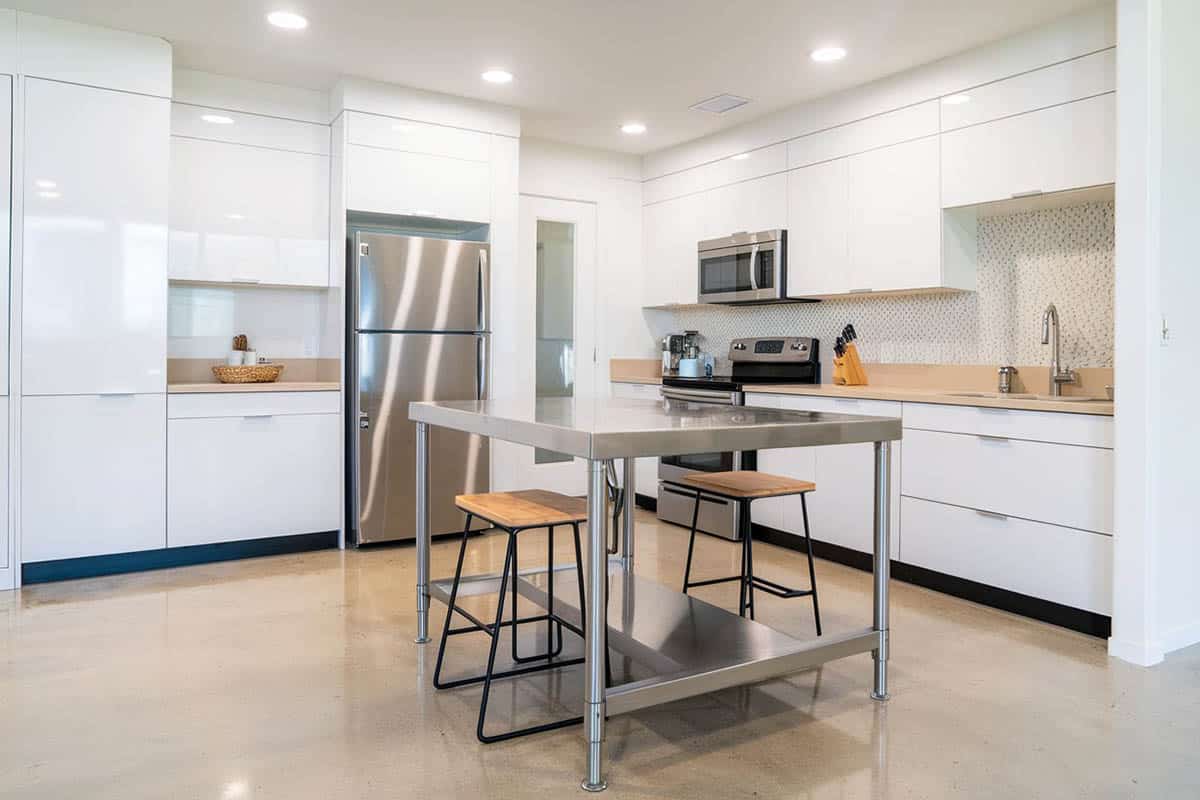
Again, epoxy floors are great for residential areas where you want the decor to be just right because they’re so heavily customizable. On top of that, the longevity of an epoxy floor saves you from a remodel in a high-traffic area of your home for a while.
There are some downsides, though. While the epoxy will handle moisture well after it is completely dried since it is water-resistant once it has set, it gets slick when wet. This means that spills and splashes should be avoided when walking around and cooking.
Epoxy Bathroom Floor
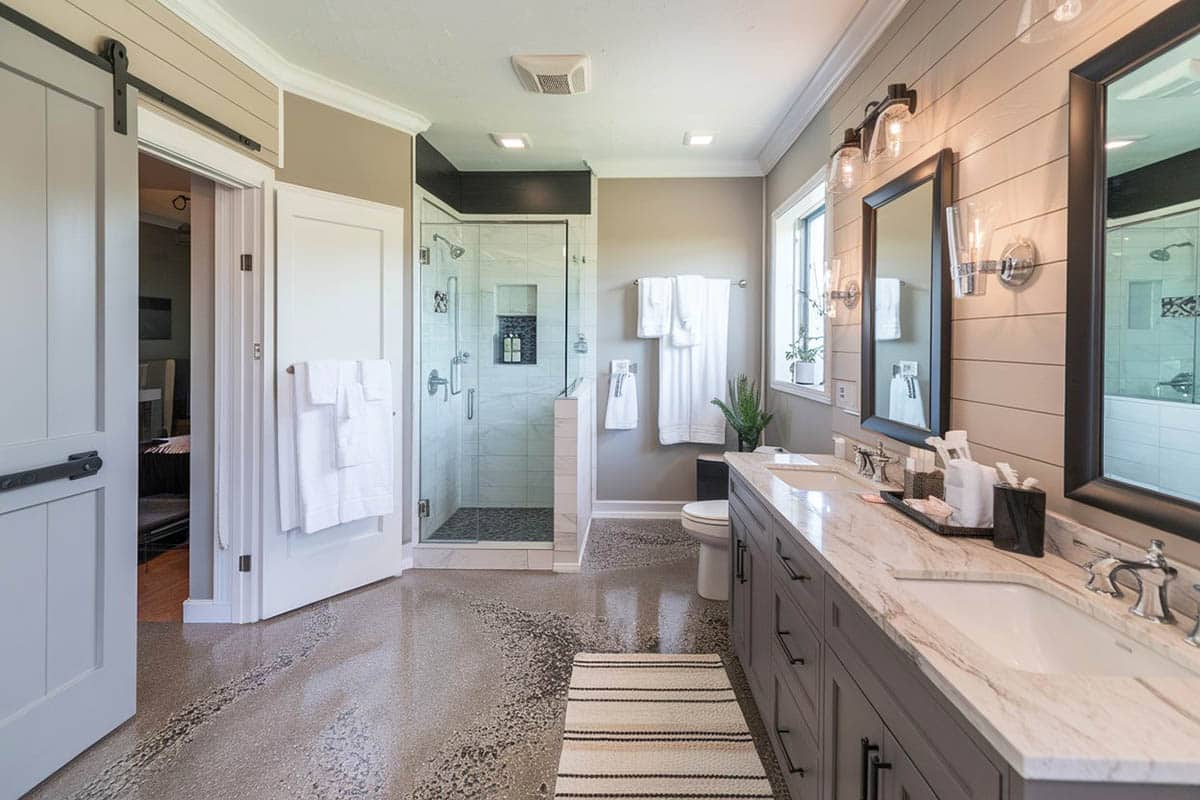
Epoxy flooring in bathrooms does have some clear advantages. For one, because epoxy flooring is so highly customizable, you can use epoxy to achieve a wide array of different designs, whether you want to use an interesting color or effect.
The only major drawback to an epoxy bathroom floor is something we’ve already touched on – it gets slick when it’s wet. While this isn’t an automatic deal breaker, it’s worth noting that you’ll want to be careful since the bathroom is an area where spills and splashes aren’t uncommon. However, it won’t damage the flooring to get damp often after it’s set.
Epoxy Shower Floor
Once again, the biggest challenge to epoxy shower floors is that they tend to get slick when they’re wet. Luckily, there are plenty of products made to help you keep your footing in the shower since most types of hard flooring can get pretty slick under the direct spray of a shower. On the other hand, you can also take advantage of the benefits we’ve already discussed such as the chance to choose among a variety of designs, types, and even just colors. This will allow you to create a one-of-a-kind shower that is resistant to water-based problems like mold and mildew. Visit this page for more options for waterproof bathroom flooring.
Epoxy Cost
As with any project, you’ll want to consider the cost of adding an epoxy floor to your home. After all, any renovation has to stay on budget to stay reasonable and stress-free. The good news is that epoxy flooring isn’t an outrageously expensive choice. The cost of any DIY project depends on several factors, such as where you’re located, where you’re buying your materials, and whether you’re taking the project on yourself or hiring professionals. The average cost of epoxy flooring sits at about $3 to $7 per square foot. This means that the bigger the project, the higher the cost but the cost per square footage is relatively low compared to some other flooring options.
How Much Does It Cost to Epoxy a Garage Floor?
Again, this price range depends on several factors, including the size of your garage. It will also vary based on your installation method. Are you laying out the epoxy yourself, or are you planning on hiring someone to do it for you? For the average two-car garage, you can expect to spend within a range of $1,320 to $3,080 with the consideration that labor costs around $1,711 on average. It’s worth repeating once more that you can shave off some of the cost of an epoxy floor by taking the project on as a DIY if you’re comfortable with that but it’s better to refer to an expert if you aren’t sure you have the time or skills for the DIY steps.
How Much Does It Cost to Epoxy a Basement Floor?
Whether you’re finishing basement floors or you just want to make sure that you one that will stand up over time, an epoxy floor is a great option to turn to. Once again, the cost is an important consideration. The fact that it’s a basement doesn’t take away from the approximate average cost of $3 to $7 per square foot for epoxy flooring. So, the cost will largely depend on how big your basement is. The average basement is around 1,000 square feet, meaning that the average cost for adding an epoxy floor would be around $3,000 to $7,000, depending on the variable factors we’ve already discussed.
Pros & Cons of Epoxy Flooring
Like anything else, epoxy flooring isn’t perfect. It offers you plenty of benefits and drawbacks and both are important to understand and factor into your renovation decisions.
Pros:
Affordable – On the more practical side, epoxy flooring is affordable compared to other types of flooring.
Stain Resistant – It’s also resistant to stains. This includes resistance to harsh materials like bleach and gasoline, which is why they’re so handy for garage floors.
Durable – Since they’re built on a concrete base and epoxy itself is strong, you can also expect your new epoxy floor to last you years to come. Plus, there’s plenty of visual variety in epoxy flooring.
Cons:
Can Crack – While epoxy flooring is durable, it tends to crack over time, so you’ll have to be careful to maintain it over the years.
Can Be Slippery – You’ll also want to be careful because epoxy floors can be slippery, especially when they’re damp.
How Long Will an Epoxy Coating Last?
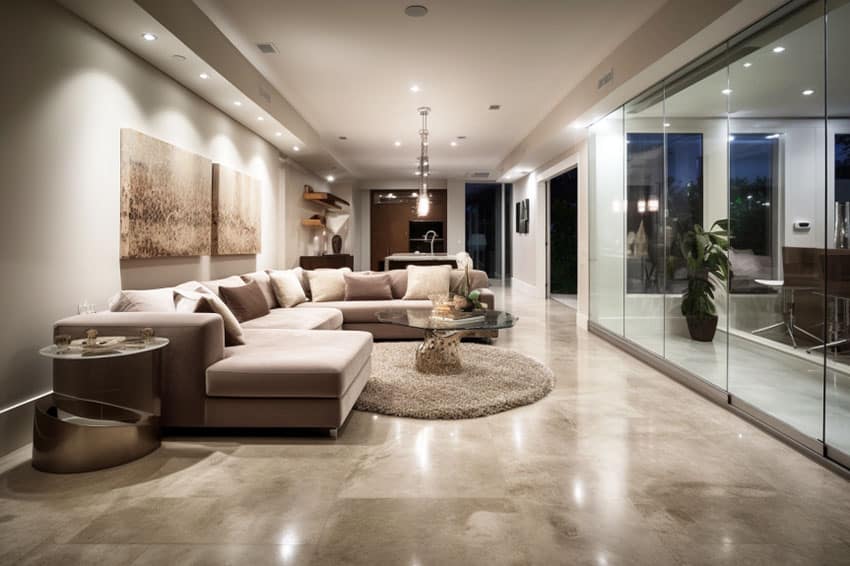
Like many things, the lifespan of an epoxy floor depends on a few factors. When correctly installed, epoxy flooring can last up to 30 years, but this can change depending on a few factors. For instance, if you install an epoxy floor in a high-traffic area like an industrial or heavy-duty commercial environment, the lifespan will be closer to 30 years. In a residential space, like your home or even a private garage, rather than a concept like a mechanic’s shop, the lifespan will be closer to 30 years.
Factors like sun exposure can also play a role in how quickly an epoxy floor deteriorates. You can also extend the lifespan of your epoxy floor by making sure to take care of it too. For example, keeping it clean and maintained can go a long way.
DIY Epoxy Floor
We’ve discussed that an epoxy floor is created by applying a chemical mixture on top of a finished concrete floor to create a hard, plastic-like coating. However, that doesn’t mean it’s necessarily a simple DIY and there are a few things that you should be aware of. For one, you can’t just pour the mixture on the concrete. You must prepare it by cleaning it and removing oils, waxes, and contaminants. You should also make sure to acid etch the floor because the concrete’s pores must be opened.
DIY homeowners must also ensure that the concrete is dry because moisture can negatively affect the finish. To avoid high humidity, a dehumidifier is a handy tool. Because there are so many factors to correct epoxy flooring installation, it’s best suited to professionals and people who are very comfortable with harder DIY projects.
How to Epoxy a Concrete Floor
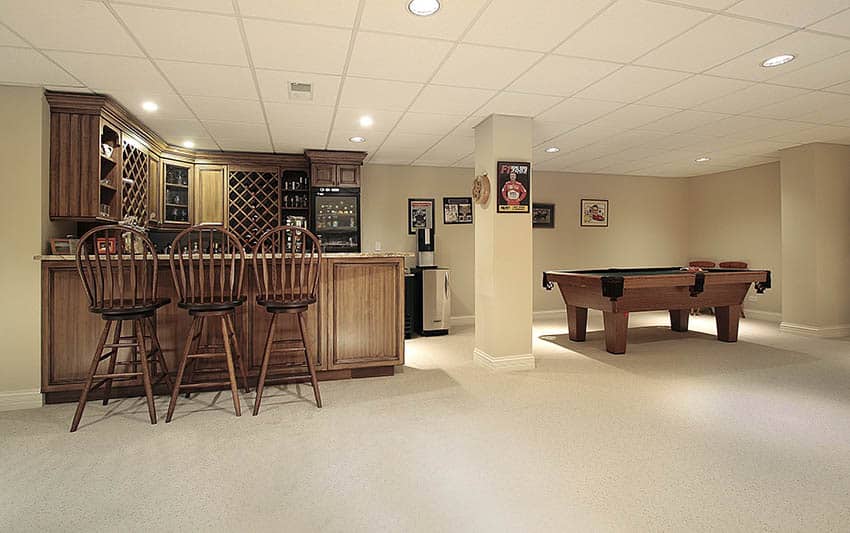
The first step in prepping a concrete floor for an epoxy coating is to clean it thoroughly. The last thing you want to do is trap debris under the epoxy, which can result in an uneven or tarnished finish. Take the time to sweep and use a degreaser for any grease stains. The environment matters too. Your concrete floor should be completely dry and at least 55 degrees Fahrenheit and the ambient air should sit between 60 and 90 degrees Fahrenheit. If the concrete is new, it needs to have been cured for at least 30 days before adding the epoxy. It’s almost as easy to add epoxy as to put paint on a wall, but you’ll want to make sure it’s smooth and has at least 12 hours to cure per coat.
Best Epoxy for the Garage
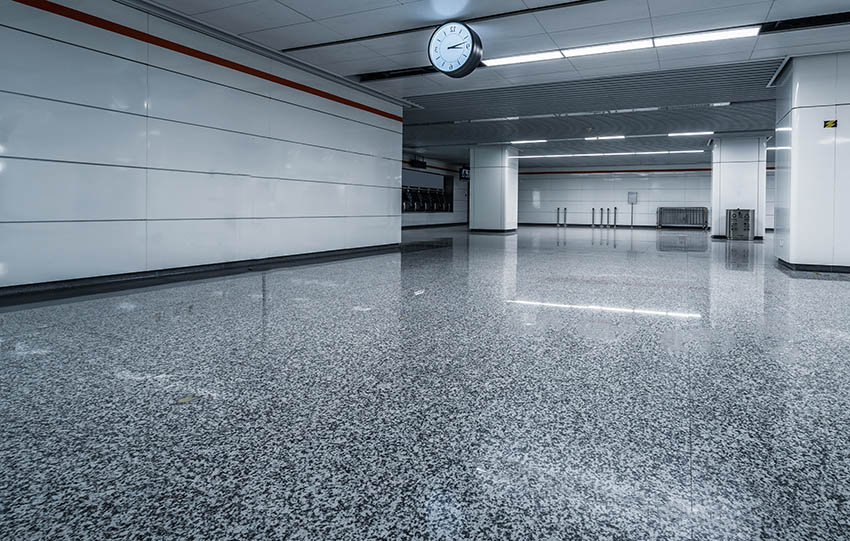
As we saw earlier, there are various types of epoxy to choose from. This means that there are plenty of options regarding what garage epoxy to use and how you’re installing it, whether that’s a DIY project or a professional installation. It’s easiest to find kits with waterborne epoxy paint for DIY projects. It has the longest pot life compared to other types of epoxy and doesn’t take as many tools and supplies to lay down. Plus, brands like RustOleum offer this type of epoxy in DIY kits. Even better, they usually don’t take many coats, cutting down on teh amount you need to buy even though they’re not quite as durable. Read more about concrete floor finishes here.
Can You Epoxy Over An Epoxy Surface?
Yes, you can add an additional coat of epoxy to an epoxy floor. Yet, this doesn’t mean that you can simply pour it on as is. Just like adding an initial coat of epoxy to concrete, you need to take the time to prepare the floor properly. When you’re applying an additional coat of epoxy to an epoxy floor that has already dried, you won’t benefit from the chemical bond. In its place, you’ll need a mechanical bond for the new epoxy to latch onto the epoxy that has already cured on the floor. The best way to do this is to sand down the existing epoxy floor until it has a nearly white, matte appearance.
How to Clean Epoxy Floors
Luckily, cleaning an epoxy floor isn’t a difficult task. For the most part, you can rely on the cleaning products you already have around the house to get the job done. To start, you will want to sweep and vacuum the floor. This will remove any surface dust, dirt, or grime to clean it and get it out of the way for tackling deeper messes. For any leftover messes, you only need a hard foam mop and some water, preferably hot or warm water. If you need to commit to a second round of mopping for particularly challenging stains, you can use a mixture of ammonia and water. However, the mix should be a ratio of only about two or three ounces of ammonia for every gallon of hot water.
Do you like epoxy flooring? Let us know what you think about epoxy coatings in the comments. For more related ideas check out our gallery of kitchens with epoxy countertops.


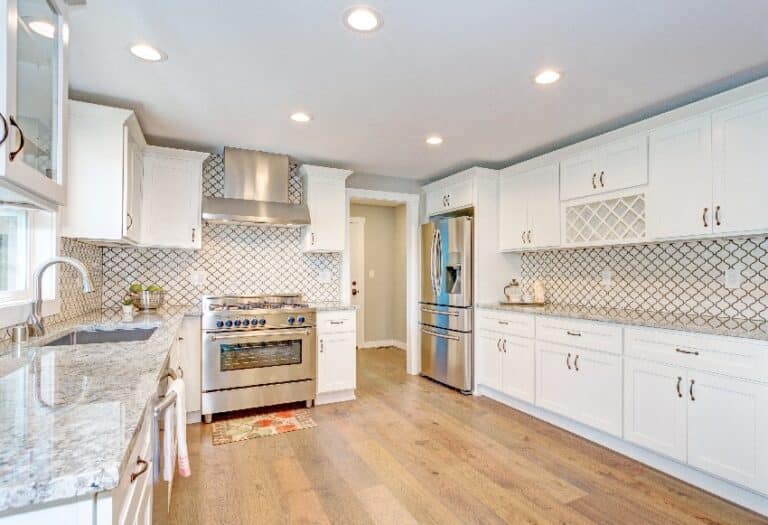
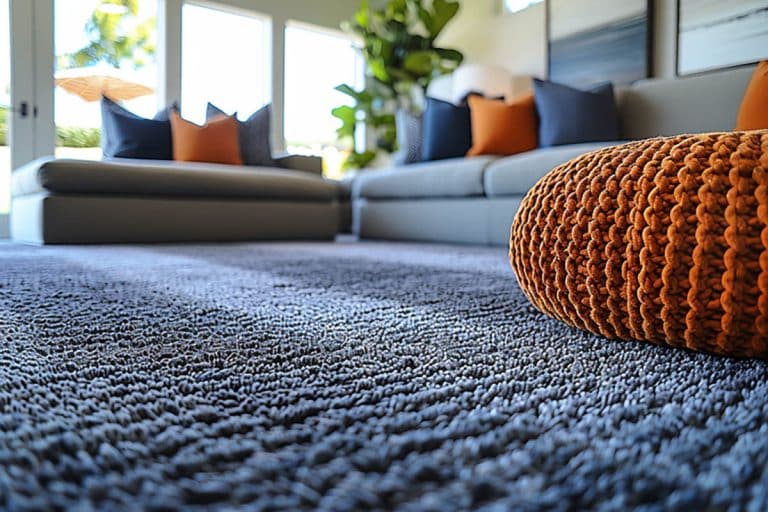

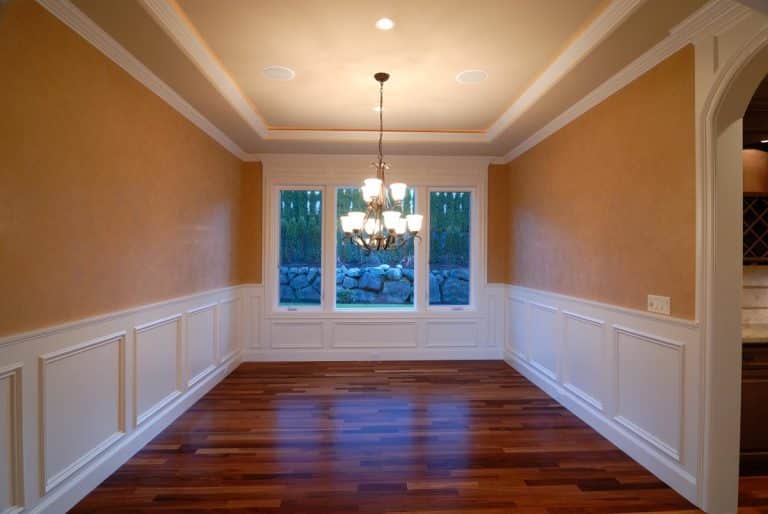

I really like how you stated that epoxy floor coating is great for resisting things like stains and chemicals. This might be a great choice for me as I have been planning to turn my unused basement into a hang-out room for the adults while the kids get the playrooms in the main parts of the house. Since we’ll likely be drinking and moving furniture around a lot there, I’ll definitely look for a basement floor epoxy coating service that can help us out with this.